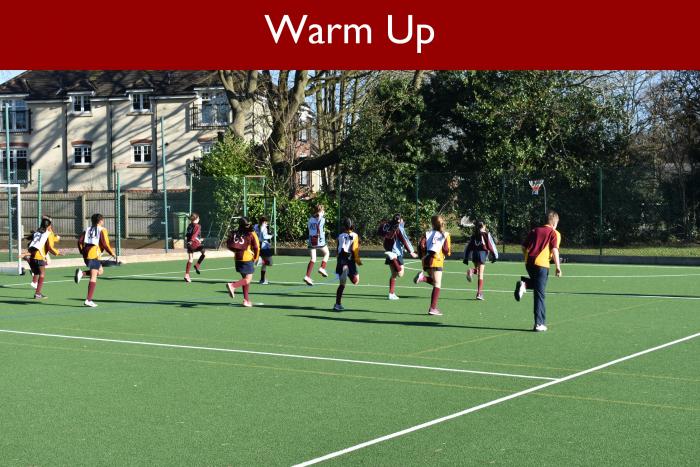
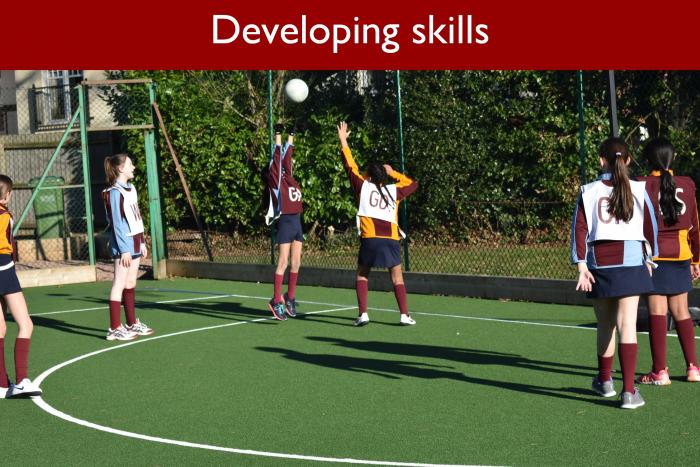
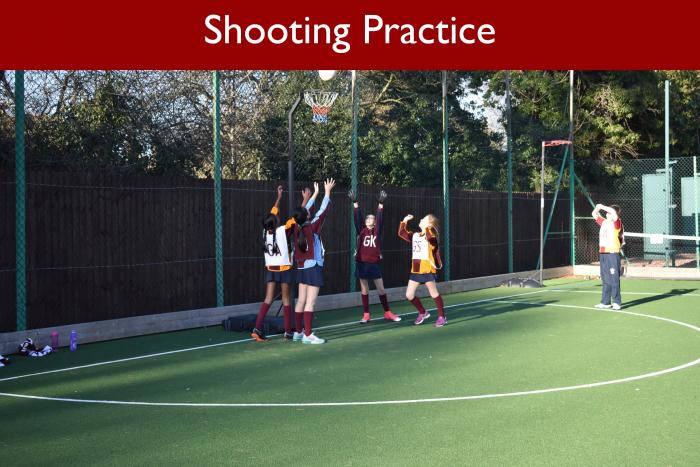
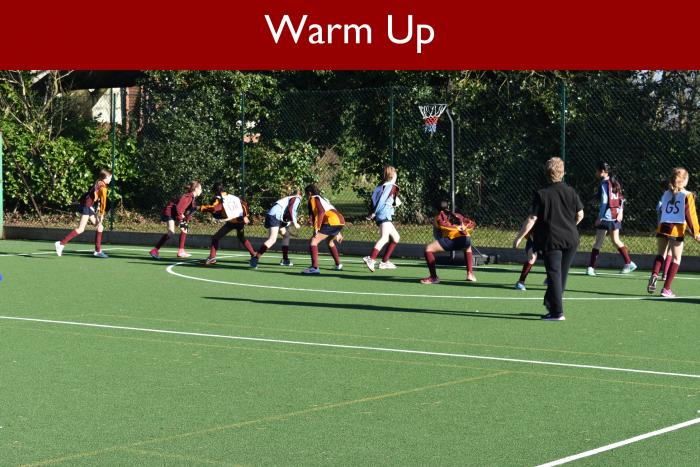
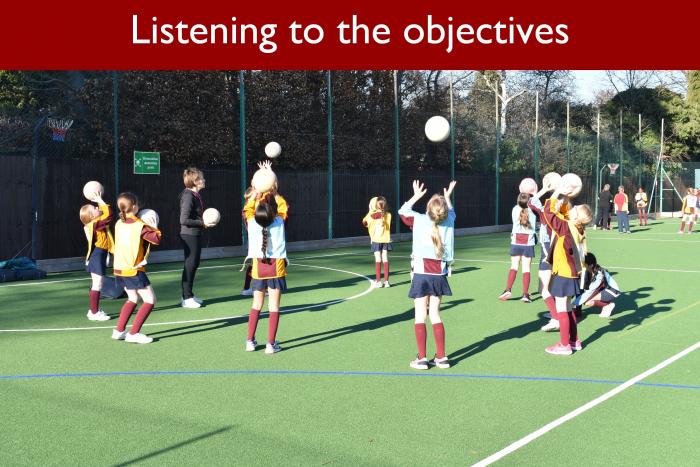
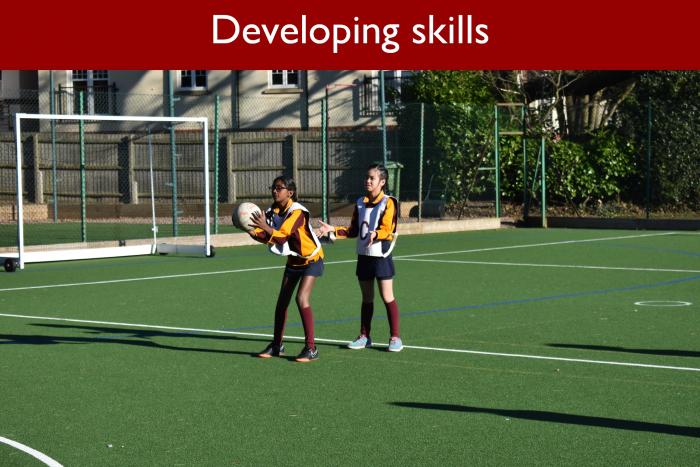
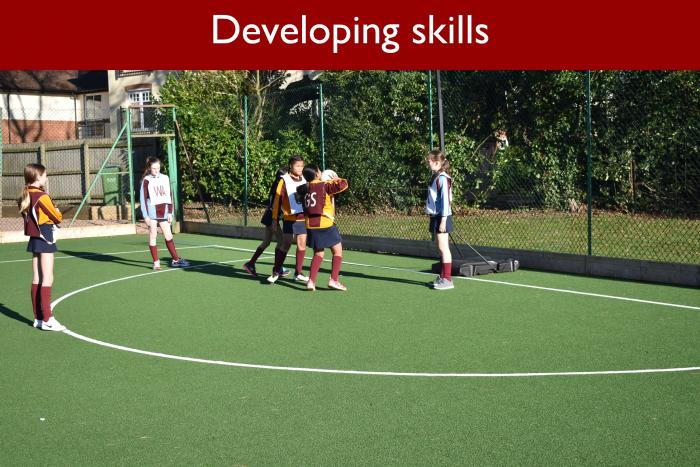
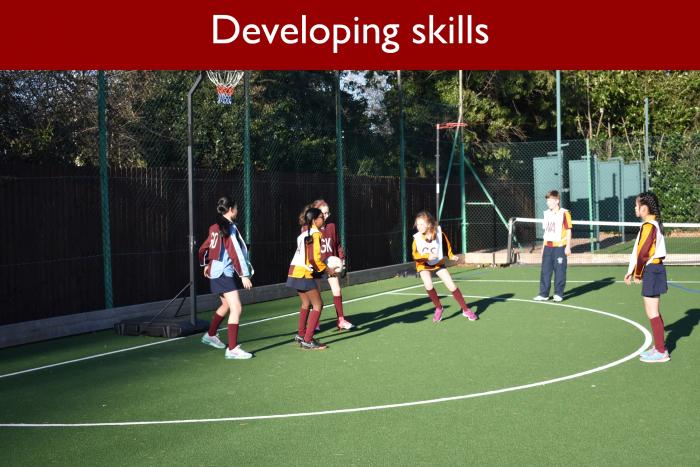
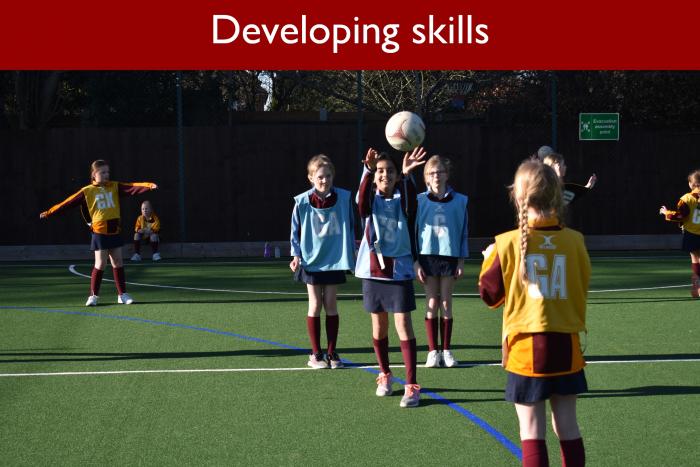
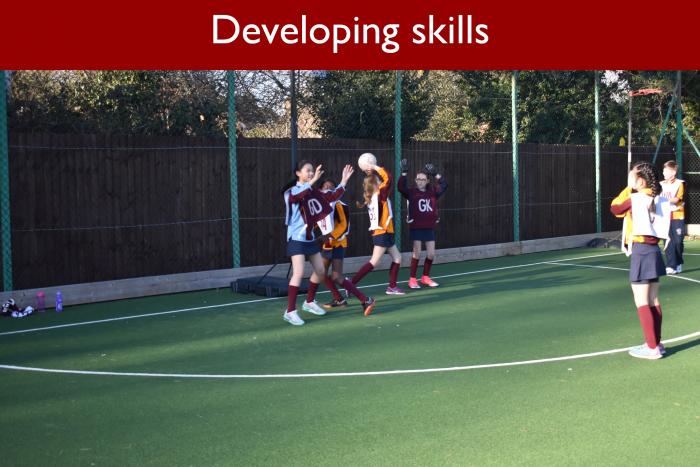
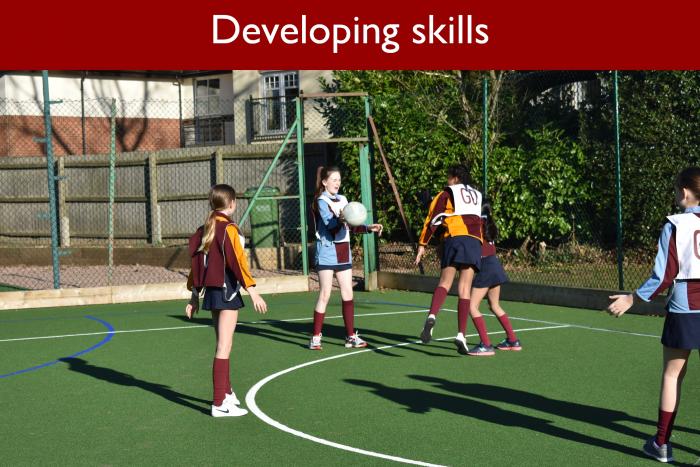
Practice Makes Perfect
Last term I told you about how we begin the process of teaching rugby skills to our Form 1 children. This time I want to focus on netball in Forms 5 and 6, where the pupils are learning how to implement the skills they have learnt in previous years at a much more sophisticated level and in match situations.
The plan this half term for Mrs Buxton and Mrs McGrory involves helping the children to find ways of getting the netball out of the defensive zone on the court, as well as keeping the opposition guessing by using the wings of the playing area to cross the neutral zone, rather than charging through the centre. The third tactical skill, and the one forming the core of this week’s lesson, concerns getting the ball into the attacking circle in such a way that the attacker is quickly in a scoring position.
Every lesson starts with a thorough warm up and, with this successfully completed, Mrs Buxton explained to the children that, although she has seen them catch the ball in the attacking circle, she has noticed that they are often not well placed to shoot. This means that they have to make at least one pass to a fellow team member before anyone can attempt a shot at goal. Of course, any pass in netball carries an element of risk, and may lead to the opposition taking possession of the ball. Unnecessary passing, therefore, is best avoided.
What could the players do, Mrs Buxton wondered, to maximise the chances of shooting and minimise the potential pitfalls of passing in the attacking circle? The key points the children identified were to think more carefully about the optimum position in which to stand to receive the ball. They realised that, in the short term, they might have to resist the temptation to call for the ball so they could move to a more favourable location within the circle. In addition, a good player should dodge around opponents to enable them to catch the ball whilst remaining in a shooting position. When the ball needs to be passed, a mixture of short and longer passes is an effective way of confusing the opposition. Finally, thinking in particular about team work, the children were encouraged to focus on using different players within the team to distract the opponents, thereby forcing them to move out of the way of their play.
Taking each of these points in turn, Mrs Buxton and Mrs McGrory discussed and demonstrated what was required for successful play. The children then had an opportunity to rehearse these skills before everyone moved into a whole game situation. In the game, the rules were modified slightly to enable the key skills to be practised in greater quantity than might usually be expected.
Lessons also involve an element of shooting practice, where players take ten shots at goal in quick succession, counting up how many goals they score. Scores are recorded on a bar chart placed above each player’s peg in the changing room so they can easily see their progress during the term.
It takes patience to learn the required level of forward and upward thrust to aim successfully at the netball net. To help our netball teams, we have recently introduced netballs as part of the playground equipment in Upper School. Children from Form 3 upwards enjoy taking netballs and practising what they have been learning in lessons in a designated area on the playground, working particularly on shooting and passing techniques. We look forward to seeing this additional practice translated into further success in matches against other schools.